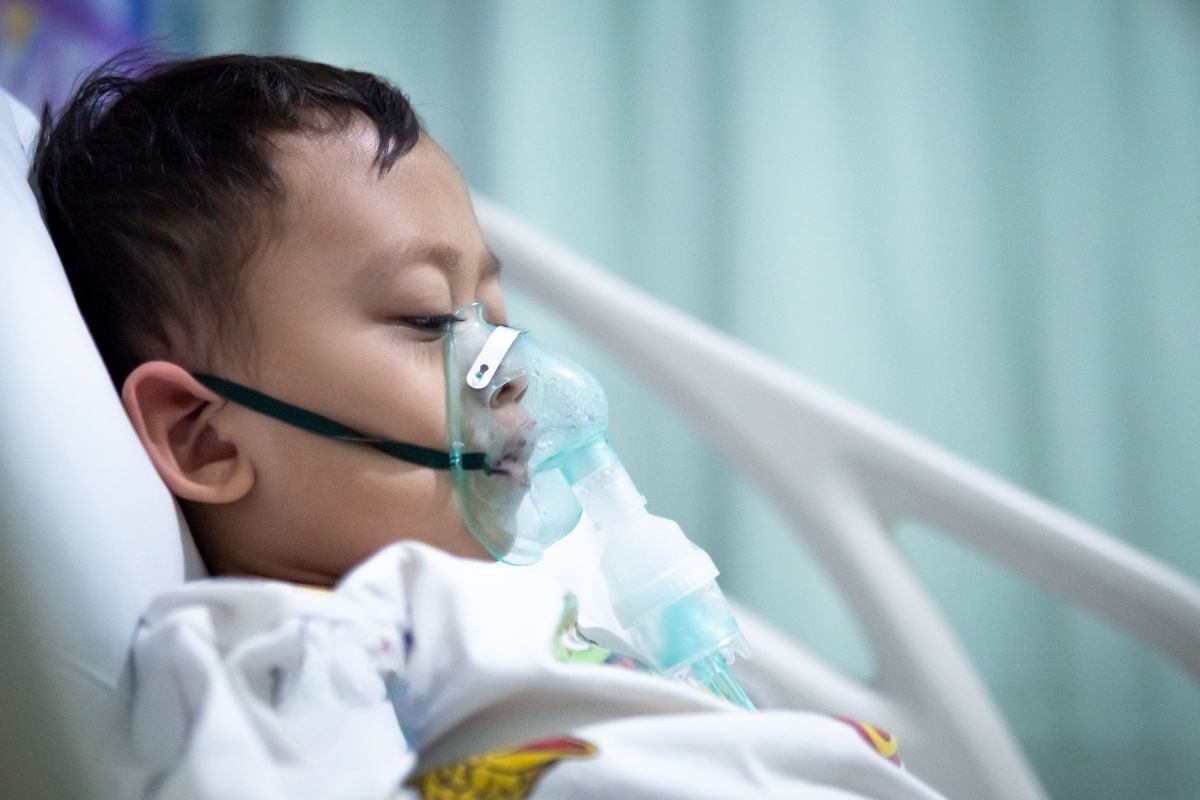The Most Commonly Misdiagnosed Conditions in America, Claggett, Sykes & Garza

A new study from Claggett, Sykes & Garza uncovers critical gaps in how life-threatening illnesses are diagnosed in children with 2025 data confirming that infections like sepsis, meningitis, and pneumonia now account for the majority of serious diagnostic errors in pediatric care.
Based on new research from the Johns Hopkins Armstrong Institute, malpractice case reviews, and nationwide ER discharge data, the report reveals a pattern of fatal underestimation: children, especially babies, are routinely sent home during their most critical treatment window. Clinicians are failing to recognize early signs of serious infection, dismissing parental concerns, or skipping essential testing because symptoms don’t “seem severe.”
As lawmakers and hospitals evaluate diagnostic accountability, this study from Claggett, Sykes & Garza paints a sobering picture of what’s missed in the first hour of care and what it costs children and families in the days that follow.
Table of Contents
ToggleKey Findings:
- 27.6% of high-harm pediatric diagnostic errors now stem from missed infections.
- Infants under 12 months face 3.7x higher diagnostic harm risk than older children.
- 80% of misdiagnosed conditions in children were discharged within 3 hours of their first visit.
- Only 26% of hospitals have structured pediatric diagnostic error review programs.
- Federal law still doesn’t require reporting of diagnostic errors in children.
- Most harmed patients returned to the ER within 48 hours often in critical condition.
Top Misdiagnosed Pediatric Conditions:
| Condition | % of Serious Diagnostic Harms | Median Age of Affected Patients |
|---|---|---|
| Sepsis | 12.1% | <1 year |
| Meningitis | 7.8% | 0–2 years |
| Pneumonia | 4.3% | 0–5 years |
| Appendicitis | 3.2% | 6–12 years |
| Type 1 Diabetes (DKA onset) | 2.5% | 8–14 years |
| Encephalitis | 1.9% | 2–6 years |
| Osteomyelitis (bone infection) | 1.7% | 3–8 years |
| UTI leading to sepsis | 1.6% | <3 years |
| Intussusception | 1.2% | <2 years |
| Severe Asthma | 1.0% | 5–10 years |
| Brain Tumour (initial visit) | 0.9% | 5–12 years |
See the full study here.
Breaking Down the Table Data:

Sepsis (12.1%):
Often presenting as fever, irritability, or lethargy in infants, sepsis is missed when doctors don’t order urgent labs or blood cultures. Many affected children are labeled with “viral illness” and sent home with minimal instructions. Within hours, their condition worsens, leading to ICU admissions or death. Early treatment can be lifesaving, but sepsis is often invisible without proper testing.
Meningitis (7.8%):
This life-threatening brain infection presents with subtle signs in young children like sleepiness, poor feeding, or irritability and lacks the classic symptoms in babies. When ER physicians don’t pursue lumbar punctures, especially in preverbal toddlers, cases are tragically missed. Even a 12-hour delay can lead to irreversible brain damage or death.
Pneumonia (4.3%):
Pneumonia in children under 5 is frequently misdiagnosed as a cold or asthma. Without chest X-rays or pulse oximetry, serious lower respiratory infections can be missed. Many families report being told “it’s nothing serious” only to return when their child is struggling to breathe. Early antibiotic intervention is critical, yet often delayed.
Appendicitis (3.2%):
Children with appendicitis often don’t present with classic symptoms. Stomach pain is dismissed as viral or dietary, especially if there’s no fever or vomiting. Without an ultrasound or CT, diagnosis can be missed. When the appendix ruptures typically within 24–48 hours the risk of widespread infection and complications rises significantly.
Type 1 Diabetes / DKA (2.5%):
Diabetic ketoacidosis is the first sign of Type 1 diabetes in many children yet symptoms like nausea, fatigue, or rapid breathing are mistaken for flu or dehydration. When ERs skip a simple blood glucose test, children may fall into diabetic coma within hours. Early recognition and insulin can prevent long-term damage or death.
Encephalitis (1.9%):
Brain inflammation from viral or bacterial causes can initially look like drowsiness or behavioral changes. When clinicians don’t escalate to imaging or spinal testing, encephalitis is missed. By the time symptoms worsen, confusion, seizures, or coma damage is often permanent. Pediatric neurologists emphasize the need for earlier suspicion in atypical cases.
Osteomyelitis (1.7%):
Bone infections in young children may show up as a limp, pain, or refusal to walk. Providers often assume it’s a sprain or growing pains and skip imaging. Delayed diagnosis allows infection to spread to the bloodstream or joints, sometimes requiring surgery or leading to permanent mobility loss.
UTI leading to Sepsis (1.6%):
Infant UTIs rarely present with burning or urgency. Fever with no obvious source is a common clue, but urine testing especially via catheter in babies is often skipped. Without antibiotics, UTIs can advance to bloodstream infections within a day, with devastating outcomes in newborns and toddlers.
Intussusception (1.2%):
A form of intestinal blockage that strikes babies suddenly, intussusception causes waves of abdominal pain and vomiting. It’s often confused with stomach flu. Without an early ultrasound, the bowel can twist and lose blood supply, a condition that becomes fatal without surgery.
Severe Asthma (1.0%):
New-onset asthma attacks in children without a prior diagnosis are often mistaken for colds or anxiety. Without timely steroids or bronchodilators, kids may spiral into respiratory failure. Multiple reports show children sent home after mild wheezing, only to return in an ambulance.
Brain Tumour (0.9%):
The earliest signs of brain tumors headaches, clumsiness, or nausea are frequently misattributed to vision issues, migraines, or stress. Without imaging, months can pass. Some children suffer irreversible neurological decline or death before a diagnosis is ever made.
Children can’t always say what’s wrong and infants, in particular, show few “classic” signs of severe illness.
Yet even in 2025, pediatric diagnostic errors are not formally tracked by most hospitals, and no federal law mandates reporting these events. Families often leave the ER feeling better, but they end up facing terrible consequences a few hours later.
Because of this, hundreds of kids each year have illnesses that could have been treated if they had been diagnosed appropriately during that initial visit.
Methodology & Sources:
- Johns Hopkins Armstrong Institute (2024–2025): Diagnostic Error in Pediatrics multicenter study (3,000+ pediatric cases)
- AHRQ Pediatric Safety Reports (2024): Diagnostic harm incidence, reporting gaps, and underdiagnosis clusters
- CDC & CMS Pediatric ED Data (2025): Real-world ER discharge and 48-hour readmission stats
- AAP Clinical Practice Bulletins (2024): Diagnostic pathway guidance for febrile infants and toddlers
- LexisNexis & legal filings: Malpractice audit of pediatric diagnostic delay cases across 12 states (2024–25)
Published by Carol Jones
My aim is to offer unique, useful, high-quality articles that our readers will love. Whether it is the latest trends, fashion, lifestyle, beauty , technology I offer it all View more posts







